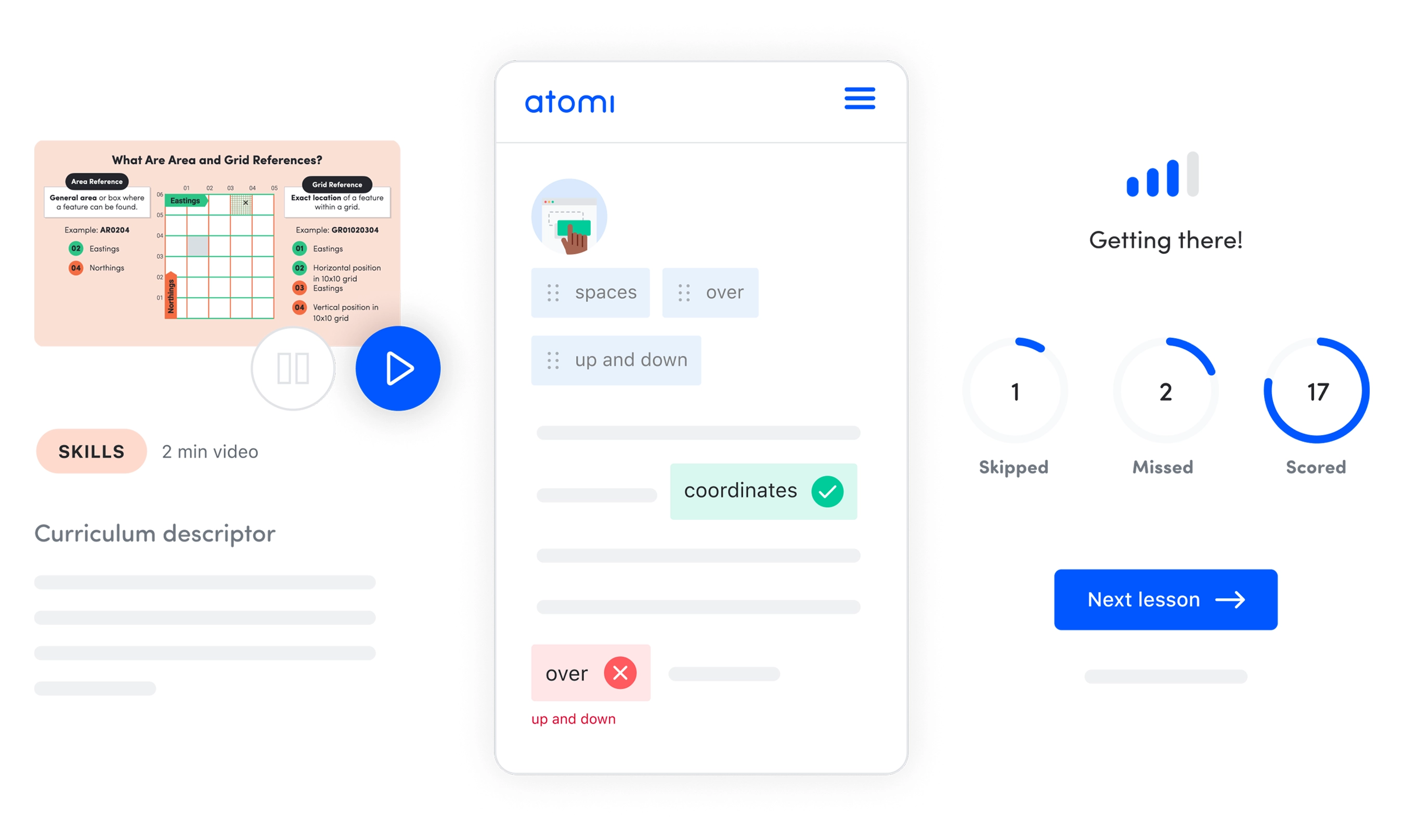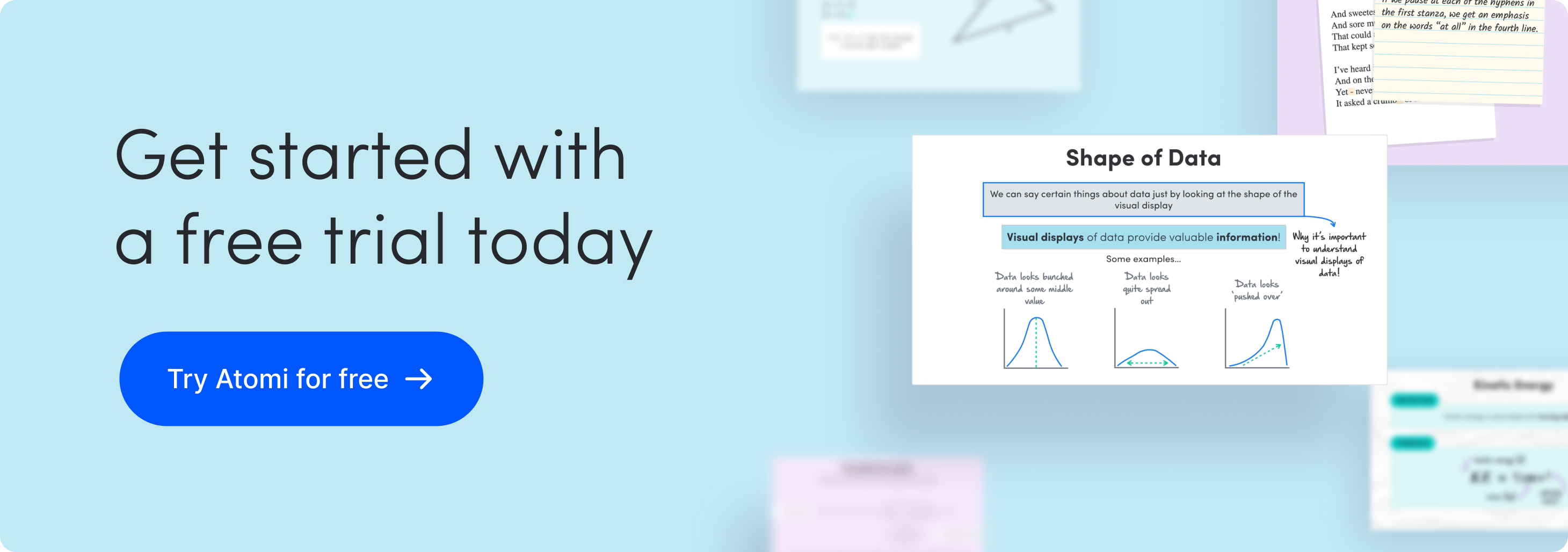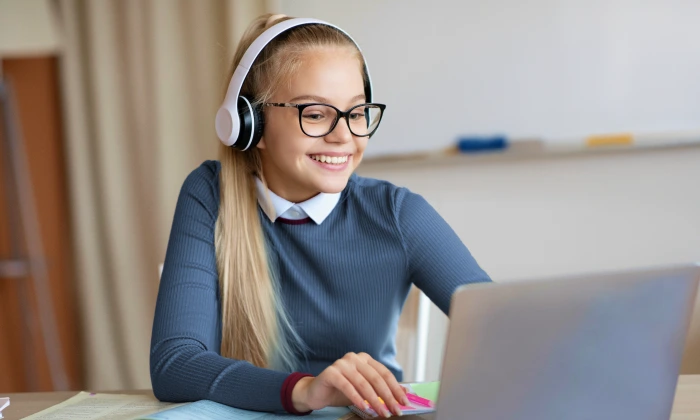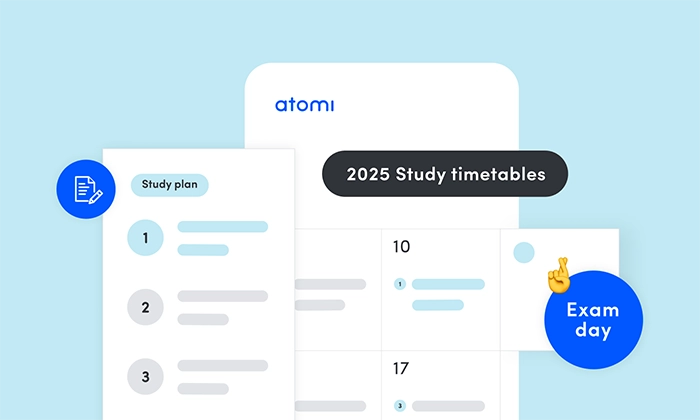How to make group learning actually work

Group work should be one of the most powerful tools in your teaching toolkit. When it works, it builds collaboration, critical thinking, confidence, and a deeper understanding of content. But too often, group learning turns into uneven, stressful chaos, which can end in frustration.
The good news? You don’t need to overhaul your whole lesson plan to make group-based learning a success. With a few smart tweaks and the right tools, you can set students up to show up confident, prepared, and ready to contribute. Here’s how.
The real challenge with group learning
We all know the scene: one student dominates, another stays silent, a third does the entire task solo, and you’re left wondering if anyone actually learned anything. Group learning can easily fall flat when students don’t know what’s expected or how to meaningfully contribute.
The issue isn’t the concept itself; it’s how we prepare students for it. Here are some common reasons why group learning often fails:
- Unclear roles: Students are unclear about who’s doing what.
- Uneven participation: The loudest voices take over, while more reserved learners disengage.
- Time pressure: Teachers are juggling content delivery, behaviour management, and assessment.
What students actually need to succeed in groups isn’t a “fun” activity or a looser structure. It’s clarity, confidence, and content knowledge - before they’re thrown into collaboration.
No matter how well-designed a task, class, or unit is, there is an uncontrollable element… the students within the classroom.
- Sarah Eleni-Zaferis, Teacher and School Enablement Leader at Atomi
So the question becomes: How do we prepare students to collaborate successfully before they sit down in a group?
Active learning sets the foundation
Before group learning can work, you need to activate students’ brains, not just their bodies, in a circle. That’s where active learning comes in.
What is active learning?
Active learning is exactly what it sounds like: learning that gets students involved. It goes beyond passively receiving information (like reading or watching a teacher explain a concept) and asks students to engage, discuss, apply, and reflect.
Active learning tasks might include:
- Solving real-world problems
- Creating models, mind maps, or timelines
- Role plays and debates
- Peer feedback or self-assessment
The goal isn’t just doing something; it’s about doing something that deepens understanding.
Why it works:
- Promotes student autonomy: Students have more control over how they engage with the content.
- Strengthens memory and understanding: Applying knowledge cements it better than passively hearing it.
- Builds transferable skills: Students learn how to work with others, ask questions, and reflect on their own learning.
Sarah puts it perfectly:
Mastery is a mindset - a habit of approaching the world with curiosity and reflection.
To build this mindset, students need structured opportunities to struggle with purpose, reflect on their progress, and feel safe making mistakes. Active learning tasks give them this space, and they’re the missing link before we ask them to collaborate.
Keep Learning: Want more on Sarah’s thinking? Dive into the full guide on “Mastery In Motion: Steps To Go Beyond Surface Level Learning”.
Enter the flipped classroom (and why it works so well here)
Here’s where flipped classroom strategies come in. Not as a whole new pedagogy to overhaul your timetable, but as a bridge between independent preparation and collaborative group time.
Flipped learning isn’t about replacing you with video lessons. It’s about front-loading the basics so classroom time can focus on deeper, active engagement. This can make it ideal for group learning.
In a flipped classroom model, students:
- Learn the foundational content at home (through a video, reading, or task)
- Arrive prepared with a basic understanding
- Spend class time applying knowledge in meaningful group tasks
This means:
- You’re not wasting time explaining things they could’ve learned independently
- Students come in with confidence and a shared context
- Group time becomes purposeful, productive, and focused on deeper thinking
And if you’re thinking “but what if they don’t do the prep work?” - don’t worry. That’s where Atomi comes in.
How Atomi makes it easy to run great group sessions
With Atomi, flipped and active learning strategies become way more practical to implement, even in a packed timetable.

Here’s how it works:
- Short, sharp video lessons: Students learn core concepts in bite-sized videos before class. Each video is structured to target key learning outcomes and build foundational understanding.
- Quizzes and checkpoints: Built-in questions ensure students don’t just watch - they reflect and apply. Teachers can check progress before class, so they know exactly who’s ready to contribute in group sessions.
- Markbook insights: Atomi’s markbook gives you a real-time view of student progress. It shows who’s flying, who’s stuck, and what areas need revision - so you can form effective groups and tailor in-class support.
As one of our partner schools, Landsdale Christian School, shares:
Students appreciate the ability to self-guide and have autonomy over the cadence and delivery method of content.
Learn how Landsdale Christian School supports student autonomy and boosts engagement with Atomi here.
Another key benefit? Atomi supports students to become more self-directed learners. As Sarah explains:
Metacognitive strategies not only increase academic outcomes but also foster a sense of independence, empowering young learners to become self-directed learners who are more resilient.
In other words, the kind of learners who thrive in groups.

Try these 3 active group tasks
You don’t have to reinvent the wheel to embed active, collaborative learning. Here are 3 Atomi-backed group learning tasks that work in all kinds of classrooms:
Question storm
Instead of jumping straight into answers, flip the script; ask students to come up with as many questions as they can about a topic.
After watching an Atomi video lesson, students break into groups and generate questions based on what they’re still unsure, curious, or excited about. It’s a simple way to spark discussion, surface misconceptions, and fuel deeper thinking - no “right answers” required.
You can even group questions into categories like “Need to Know,” “Interesting,” or “Extension” to guide follow-up tasks. It’s low-lift, high-impact, and a great way to turn passive viewing into active exploration.
Peer teaching carousel
Turn your classroom into a rotating hub of collaboration. In a Peer Teaching Carousel, each group becomes the “expert” on one part of a larger concept. After preparing their section (with help from Atomi videos or notes), they teach it to another group, then rotate.
This continues until every group has taught and learned each part of the topic.
It’s a powerful way to:
- Boost student confidence and communication skills
- Reinforce understanding through teaching
- Make group work feel purposeful and student-led
- Plus, it takes the pressure off you to drive the whole lesson - students step up and own their learning.
Case study challenge
Give your groups a real-world scenario or problem to unpack, then step back and let them dive in.
In a Case Study Challenge, each group explores the issue from different perspectives, presents their findings, and reflects on how their approach compares to others. It’s ideal for encouraging higher-order thinking, real-world application, and cross-curricular connections.
Not only does it make learning more engaging, but it also builds critical skills students actually need beyond the classroom, like collaboration, analysis, and creative problem-solving
Group learning can work (if you set it up right)
When it comes to group learning, the potential is huge - deeper engagement, stronger collaboration, and more meaningful understanding.
The key to getting group active learning right? It all comes down to structure and support.
By laying the groundwork with active learning tasks, giving students the chance to build confidence through flipped prep, and using smart tools to track their readiness, group sessions can stop feeling like a gamble and start feeling like a win.
Start with one small shift: give your students a little more structure, a little more scaffolding, and the space to show up ready. From there, the magic happens because when students feel equipped, they contribute, they collaborate, and they learn.
Ready to see how you can embed active, group-based learning into your everyday teaching? Try Atomi for free.
.png)
References
Subscribe to our newsletter
Get the latest teaching and learning insights delivered to your inbox.
You can unsubscribe at any time, no hard feelings.
Subscribe to our newsletter
Get the latest teaching and learning insights delivered to your inbox.
You can unsubscribe at any time, no hard feelings.
What's Atomi?
Easy to understand, super engaging, and matching what you’re learning in class. Available for 100s of subjects across your high school years.
With heaps of questions and smart AI feedback that shows you what you’ve nailed and what to work on—so you won’t just feel ready, you’ll be ready.
Improve your study game, get AI-driven tips tailored to you, keep tabs on your progress and unlock insights so you can always hit your goals.
What's Atomi?
Captivating and impactful video-first content, fit for all types of learners and grounded in the absolute must-have info of the high school curriculum.
Active recall quizzes, topic tests and exam practice enable students to get immediate feedback and build skills, while allowing teachers to differentiate instruction.
Create engaging learning experiences with easy-to-use tasks, get actionable insights to differentiate instruction and experience intelligent personalisation for your students.
What's Atomi?
Short, curriculum-specific videos and interactive content that’s easy to understand and backed by the latest research.
Active recall quizzes and practice sessions enable students to build their skills, put knowledge into practice and get feedback.
Our AI understands each student's progress and makes intelligent recommendations based on their strengths and weaknesses.

.png)


